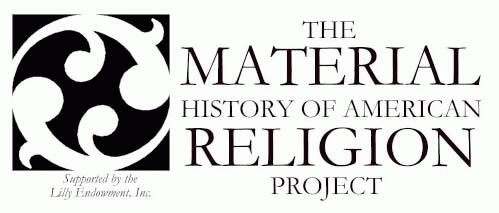


The staff of the John Bulow Campbell Library at Columbia Theological Seminary invited the Project's staff to put together an exhibit for the library's display cases. They wanted to give the seminary's community and local residents a chance to see what the project is up to. Borrowing objects from the project's participating scholars, churches, and members of the seminary's staff, we came up with twelve objects that show the variety of American religious life and the rich opportunities of researching the material culture of American religion.
The introductory text notes:
Most historians base their research and writing on written documents--books, letters, laws and other texts. Historians of religion also use sermons, theology texts, and written prayers. Such documents reveal a great deal about the past.
There is also much that documents don't reveal. They leave out everyday events people considered too mundane to write down. Documents convey the mental world of preachers and thinkers, but slight the activities of laypeople. They leave out the experiences of illiterate and powerless people. Literary sources focus attention on ideas, overshadowing concerns like money, food, bodies--concerns that occupy much human energy in any period. Without some insight into these material aspects of the past, it is easy to think of our ancestors as much more exclusively spiritual than they ever really were.
The Material History of American Religion Project aims to narrate a more full account of American religion by looking beyond documents. Using material objects as data, the Project's scholars hope to shed new light on the rich variety of the American religious experience. Such work changes and challenges many of our previous understandings of American religion. By focusing on objects, material history recognizes that religious people have lived out their spiritual beliefs and religious ideals in a very material world. The objects on display here represent just a few examples of how material objects can be used in researching American religious history.
Return to the project home page